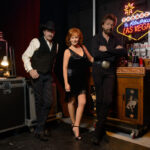As a content creator for payoffsong.com, I’ve always been fascinated by the intricate details that make a song truly captivating. Recently, a conversation with an art historian friend about horror vacui – the fear of empty space in art – sparked an unexpected connection to a pop masterpiece: Carly Rae Jepsen’s infectious hit, “Call Me Maybe.” While seemingly disparate, the concept of horror vacui illuminates a crucial aspect of this song’s brilliance: its masterful use of musical space. In a landscape often dominated by sonic clutter, “Call Me Maybe” stands out for its refreshing sparseness, proving that sometimes, less is indeed more.
Many contemporary chart-toppers, and especially talent show covers, suffer from a kind of sonic horror vacui. Producers often seem compelled to fill every sonic gap with layers of instrumentation, losing the dynamic interplay and clarity that can elevate a song. Think of overproduced X-Factor renditions or tracks where unnecessary elements, like gratuitous gospel choirs, muddy the waters. Dappy’s ‘No Regrets’, for instance, comes to mind as an example of well-intentioned but ultimately overwhelming sonic additions.
However, “Call Me Maybe” takes a different path, and its chorus perfectly exemplifies this. Listen to the opening string riff – the deliberate pause between the first and second notes is surprisingly long. This isn’t a mistake; it’s a carefully crafted moment of anticipation that keeps the listener engaged even after countless replays. This strategic use of space isn’t limited to just that initial gap. The beauty of the arrangement lies in how the rhythmic string riff and Jepsen’s vocal melody weave together, each occupying its own sonic pocket. This careful separation ensures that neither element overshadows the other, allowing the listener to effortlessly focus on the interplay between the vocals and the riff, anchored by the simple yet effective drum beat. In the often dense world of commercial pop arrangement, this clarity and focus are a rare and valuable achievement – truly the Holy Grail of pop production.
Alt text: Carly Rae Jepsen smiles brightly in a still from the “Call Me Maybe” music video, showcasing her vibrant pop image.
The brilliance of “Call Me Maybe” extends beyond the chorus. The song opens with a solo sampled pizzicato, immediately establishing a sense of starkness and intrigue. This minimalist approach continues with the arrangement drops after both the first and second choruses, creating moments of breath and release. Even on a smaller scale, the production is peppered with expertly placed “air-pockets.” Consider the isolated vocal “baby” at 0:27, beautifully emphasized by a reverse-envelope transition effect, or the drawn-out “call me maybe” at 2:31, which masterfully builds anticipation for the final choruses. The success of “Call Me Maybe” signals a potential shift in pop production, hopefully encouraging more artists and producers to embrace sonic minimalism and reclaim “vacuous” – in the sense of spacious and uncluttered – as a positive attribute in music.
Further listening reveals more subtle production choices that contribute to the song’s overall appeal. The addition of guitar in the second half of the first chorus, for example, subtly elevates the energy without overcrowding the mix. This is achieved through the guitar’s sustained rhythmic ostinato, which provides a contrasting texture to the back-and-forth interplay of the vocals and strings. This clever arrangement leaves ample room for the higher guitar line introduced later at 2:00 and 2:48, ensuring the texture remains dynamic and engaging without becoming muddy.
However, even in this expertly crafted song, there’s a minor misstep. The second pre-chorus falls into a common arrangement trap: maintaining the same energy level as the first pre-chorus. This prevents the second pre-chorus from providing the same emotional lift that the first one achieved with the introduction of a backbeat and high percussion. While adding even more elements might have diminished the impact of the subsequent chorus, it presents a challenge in maintaining momentum. Dido’s hit ‘Hunter’ navigates this issue more effectively by introducing a subtle modulated guitar element in the second pre-chorus, adding a touch of variation and lift.
Another noteworthy element is the string sound in “Call Me Maybe.” Upon closer listening, it becomes apparent that it’s not just strings. There’s likely a distorted synth or guitar line subtly layered within, along with a synth bass providing a solid foundation. The heavy envelope modification on the sustain portion of the chords is also crucial. This technique not only makes the chords sound full and powerful but also ensures they cut off sharply on the beat, emphasizing the rhythm and the spaces between phrases, reinforcing the song’s overall rhythmic drive and sparse aesthetic.
Alt text: The album art for Carly Rae Jepsen’s “Kiss” album, featuring a stylish close-up of the artist, promoting her album associated with “Call Me Maybe” song.
In conclusion, “Call Me Maybe”’s enduring popularity isn’t just down to its catchy melody or relatable lyrics. A significant part of its charm lies in its sophisticated and surprisingly sparse arrangement. By embracing musical space and resisting the urge to fill every sonic corner, the producers created a pop song that is both instantly accessible and deeply rewarding upon repeated listens. It’s a testament to the power of restraint in music production and a shining example of how less can truly be more, crafting a timeless pop anthem that continues to resonate. For more information, check out the Wikipedia page on Call Me Maybe.

